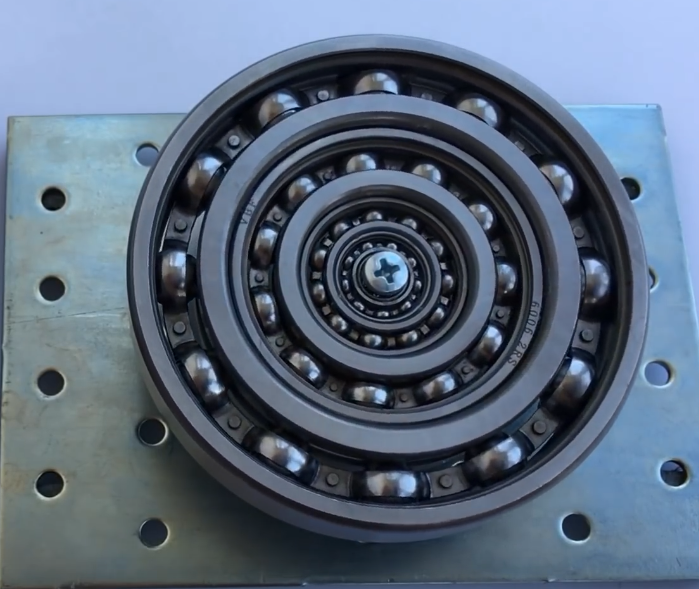I have a few questions relating to a multiple layered spinner that uses ball bearings to reduce friction, kind of similar to a fidget spinner. The image below is an example of the multilayered bearing spinner.
My questions are as follows:
- Does having multiple layer of bearing rings decrease the overall friction on the outermost ring and allow it to spin for a longer period of time?
- Does increasing the number of ball bearings in each ring decrease friction?
- Are there any formulas or relation that would allow me to calculate the overall run time of the outermost ring for a given tangential force?
